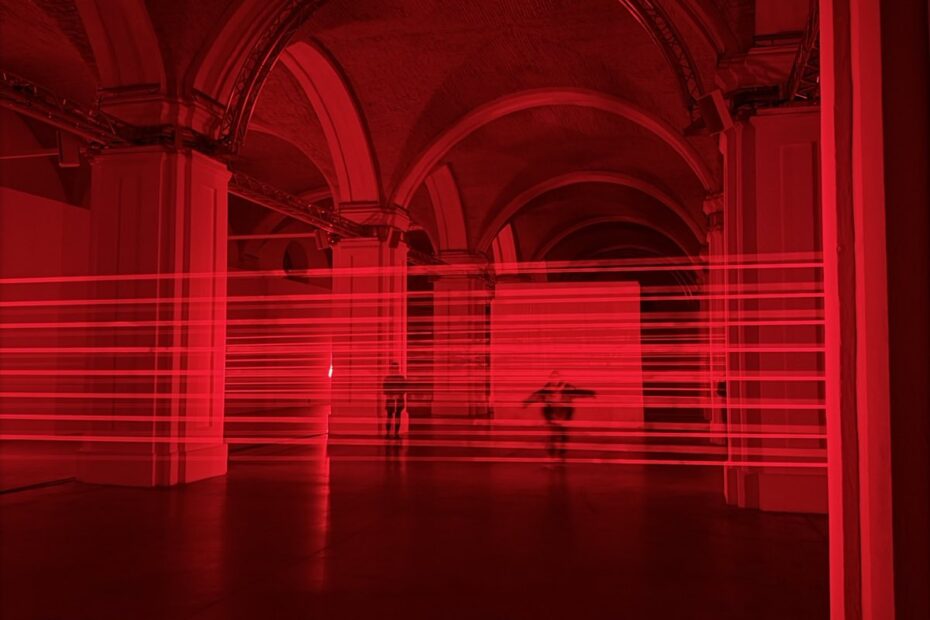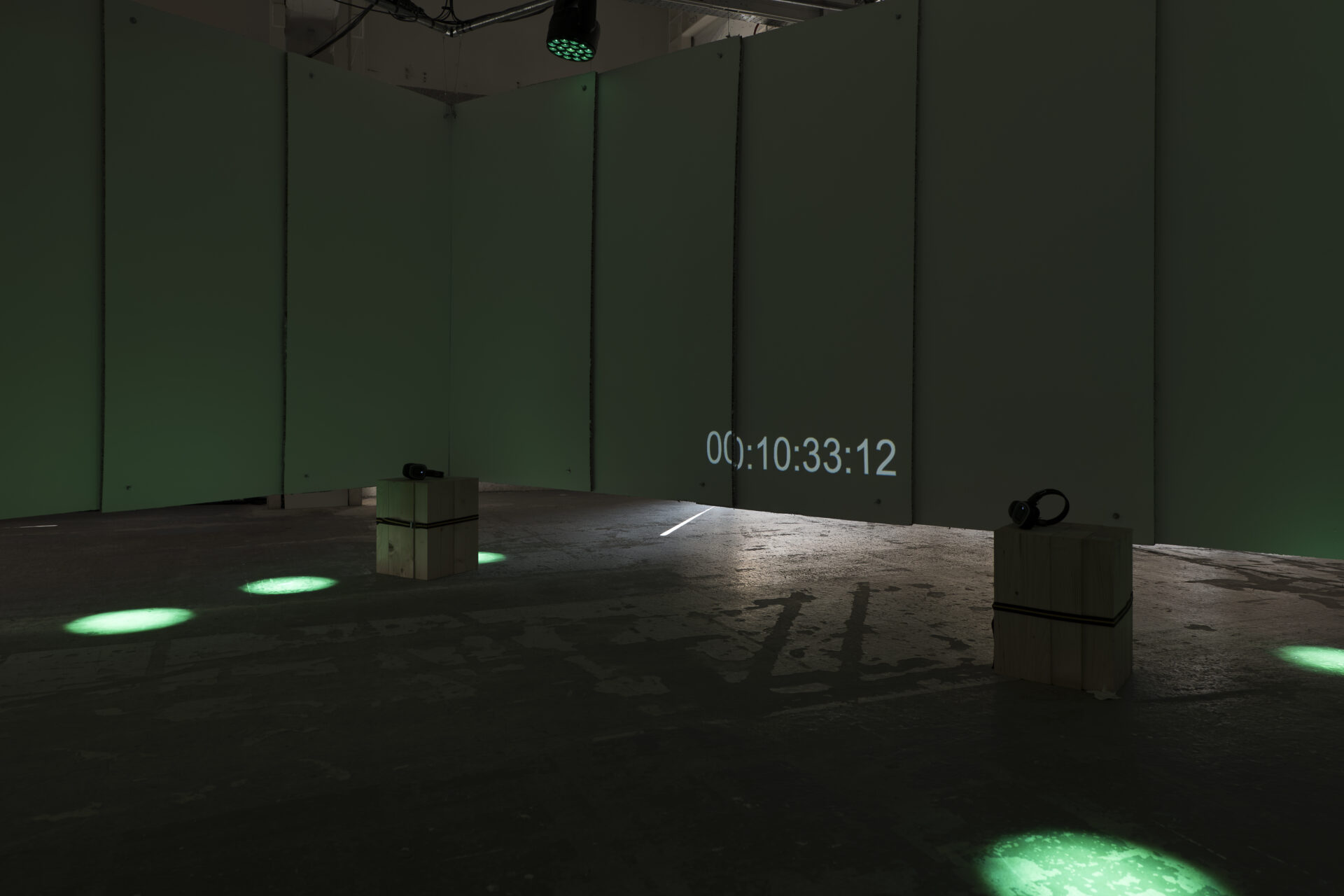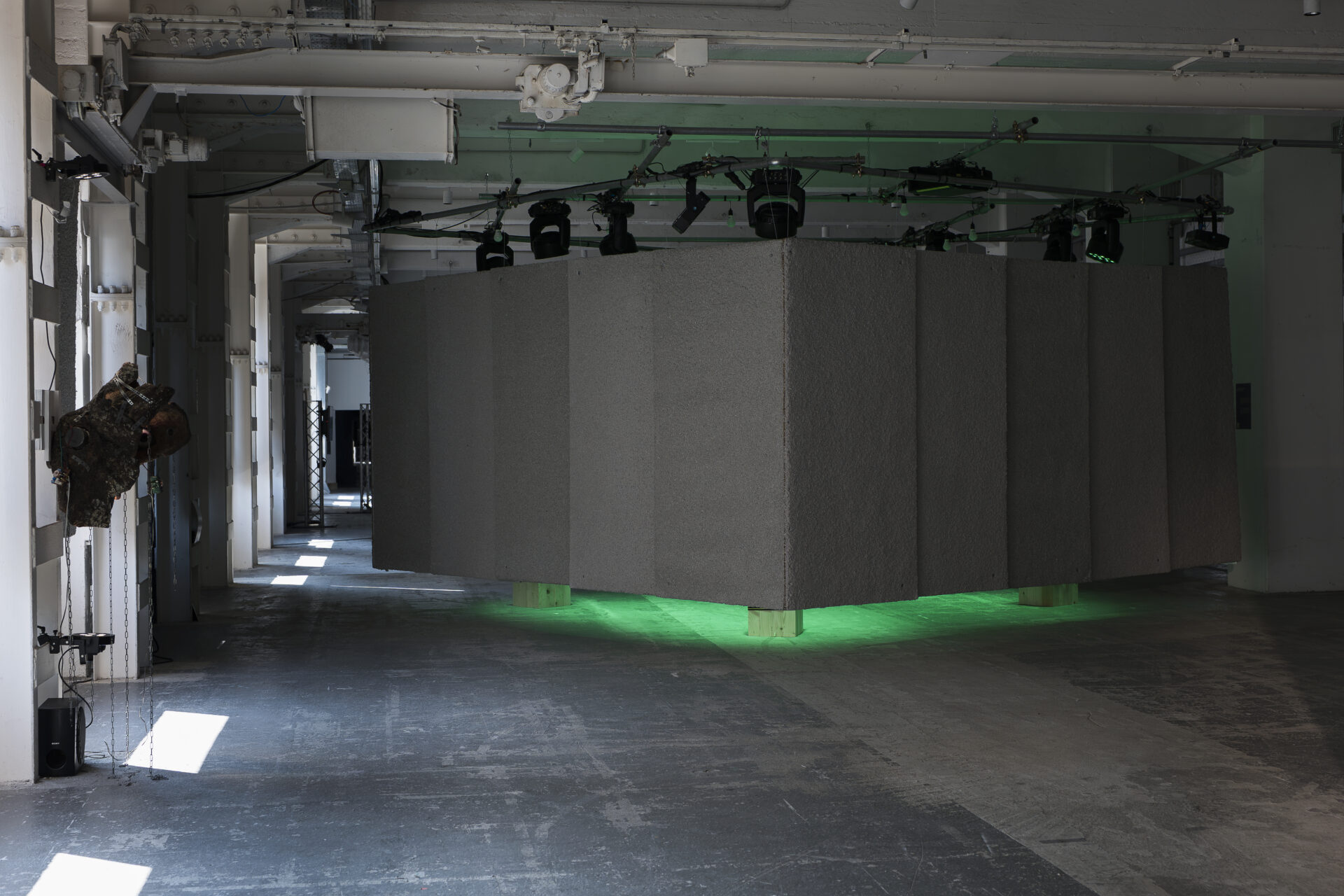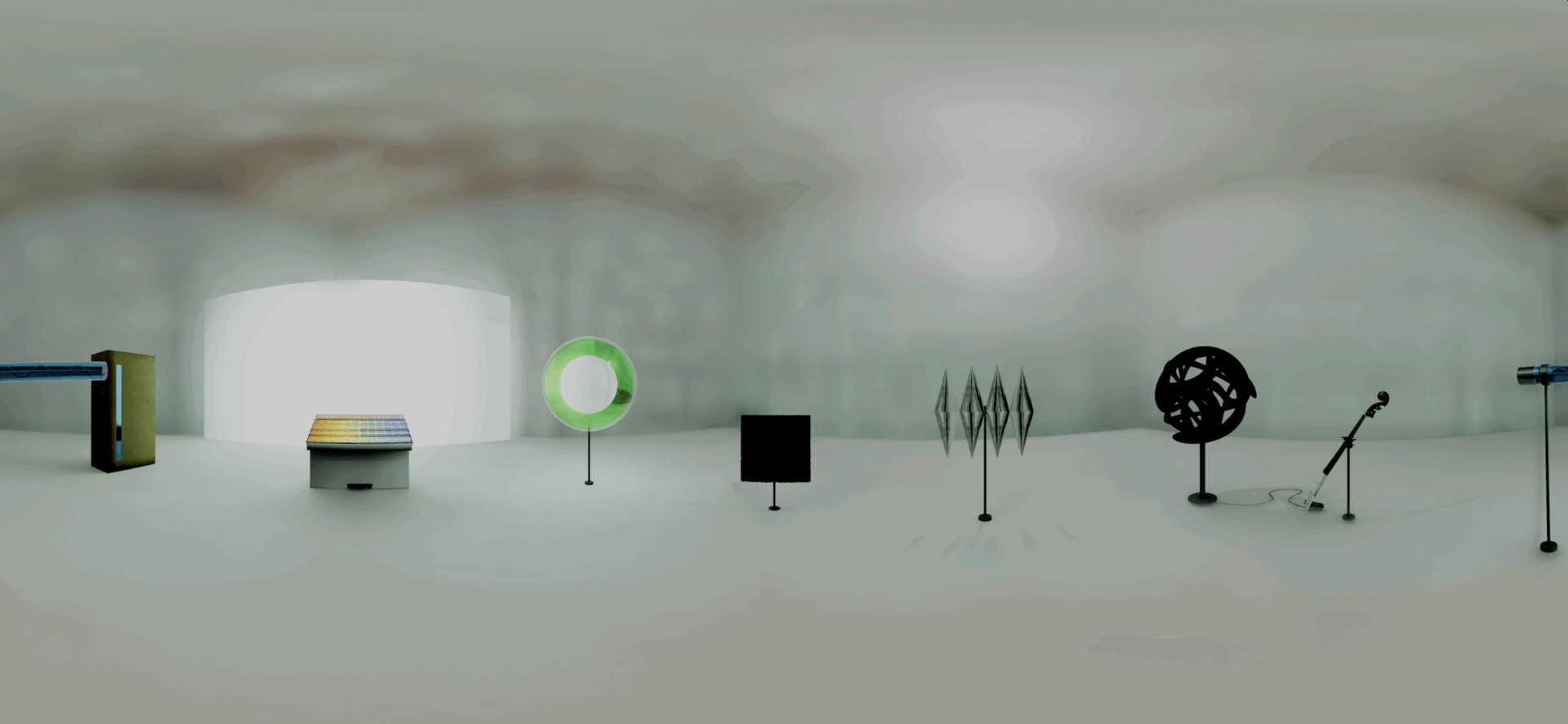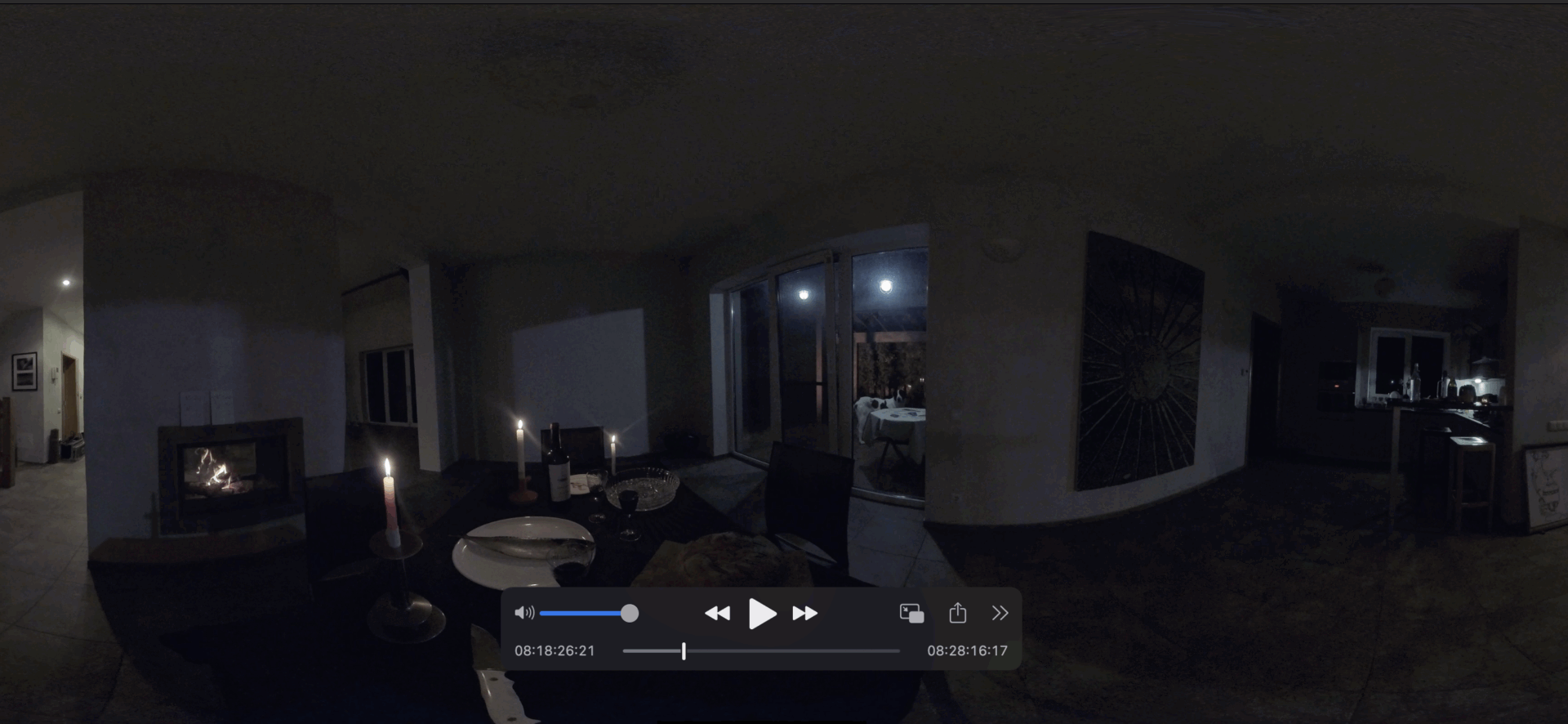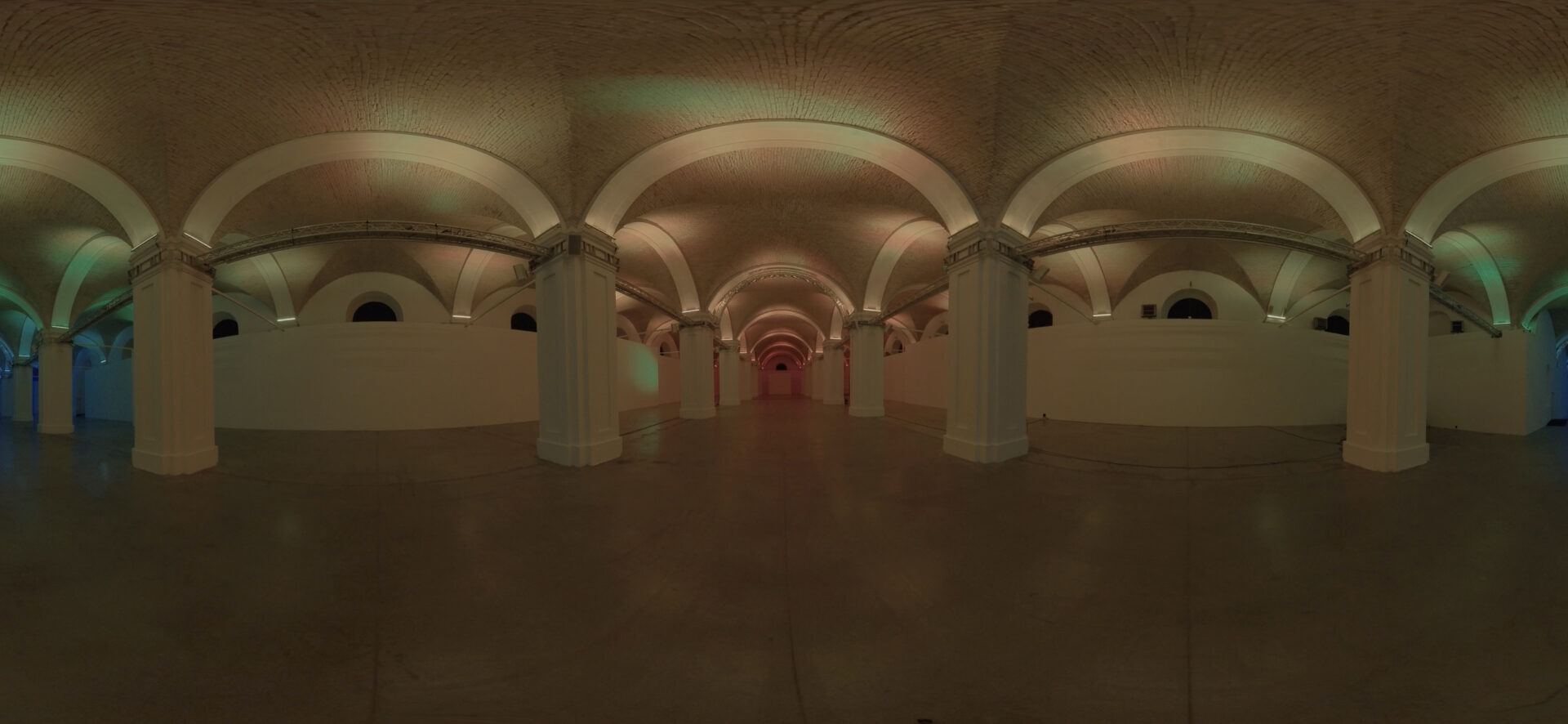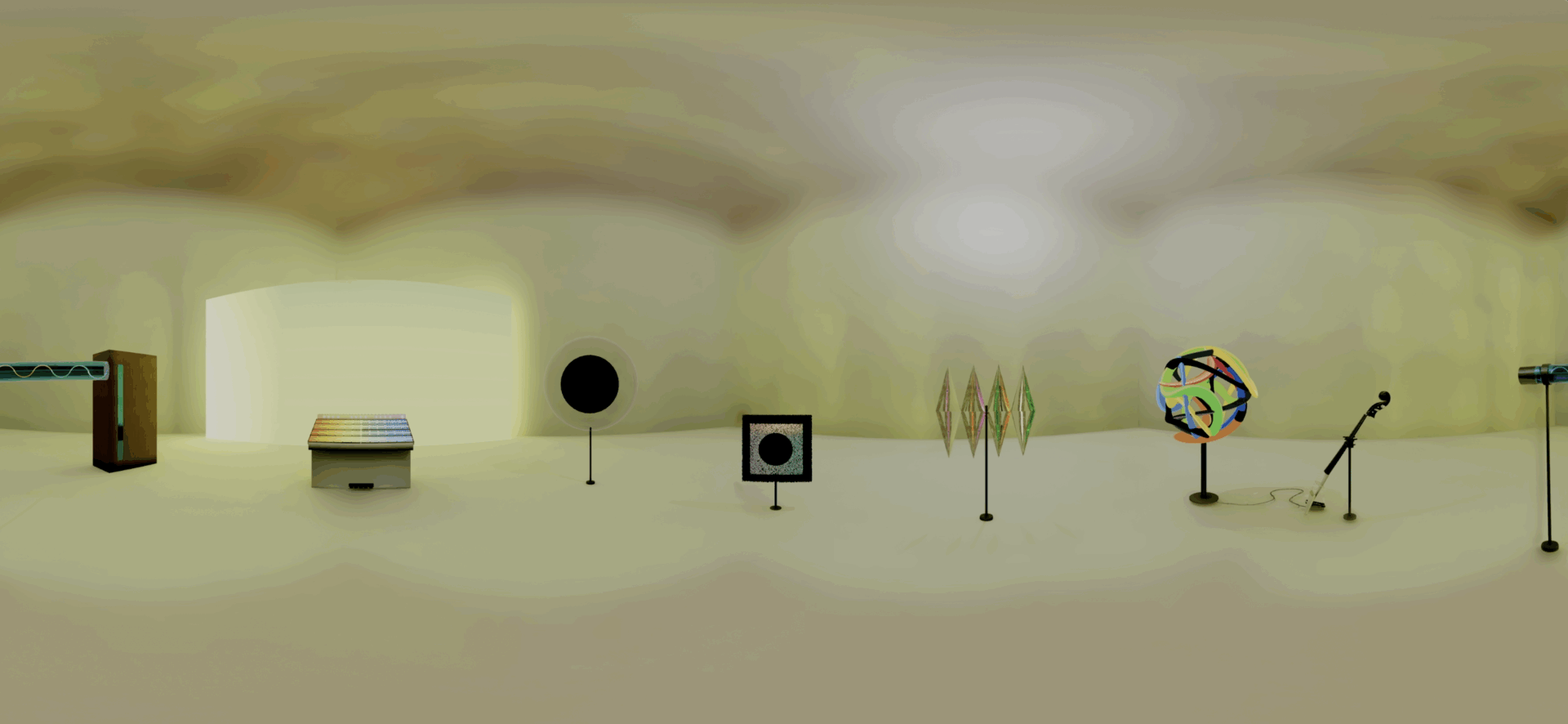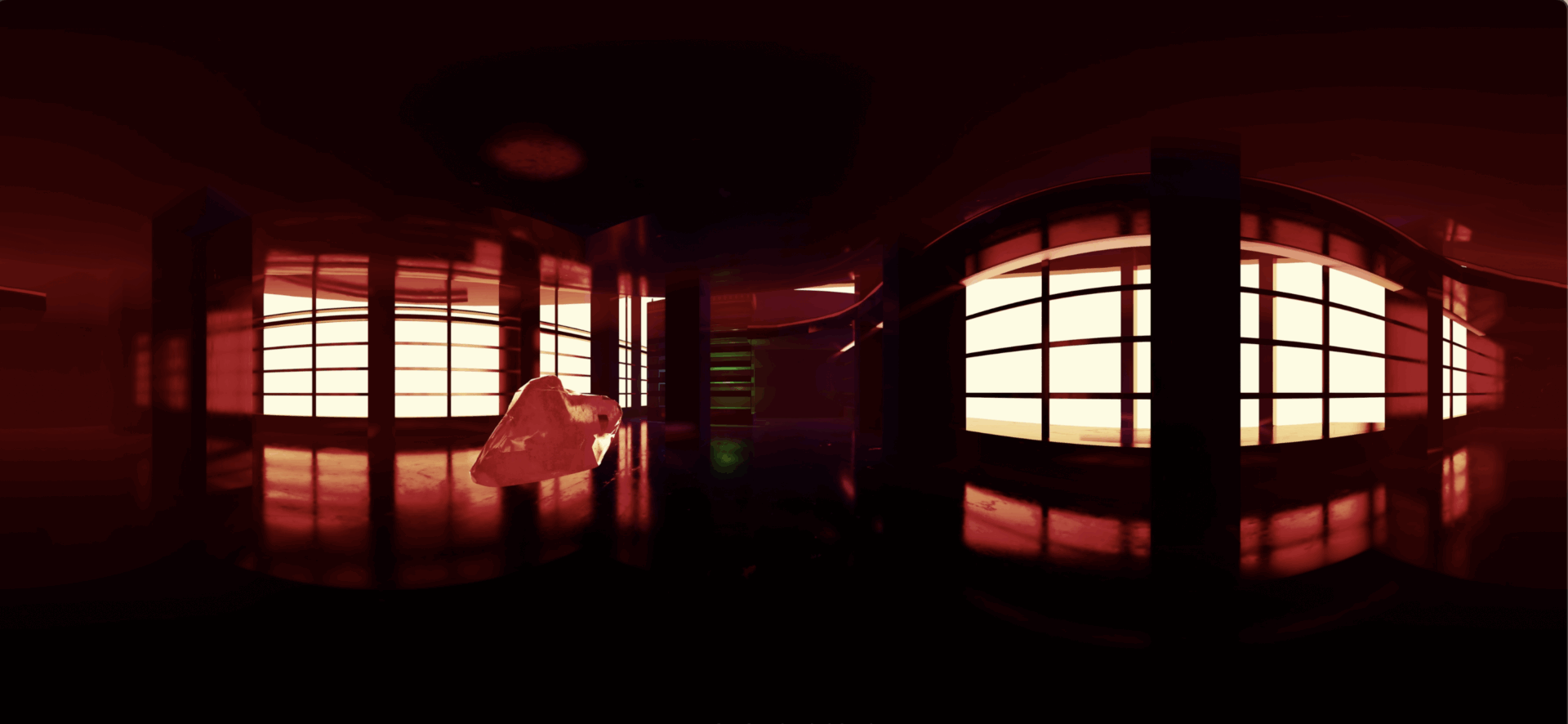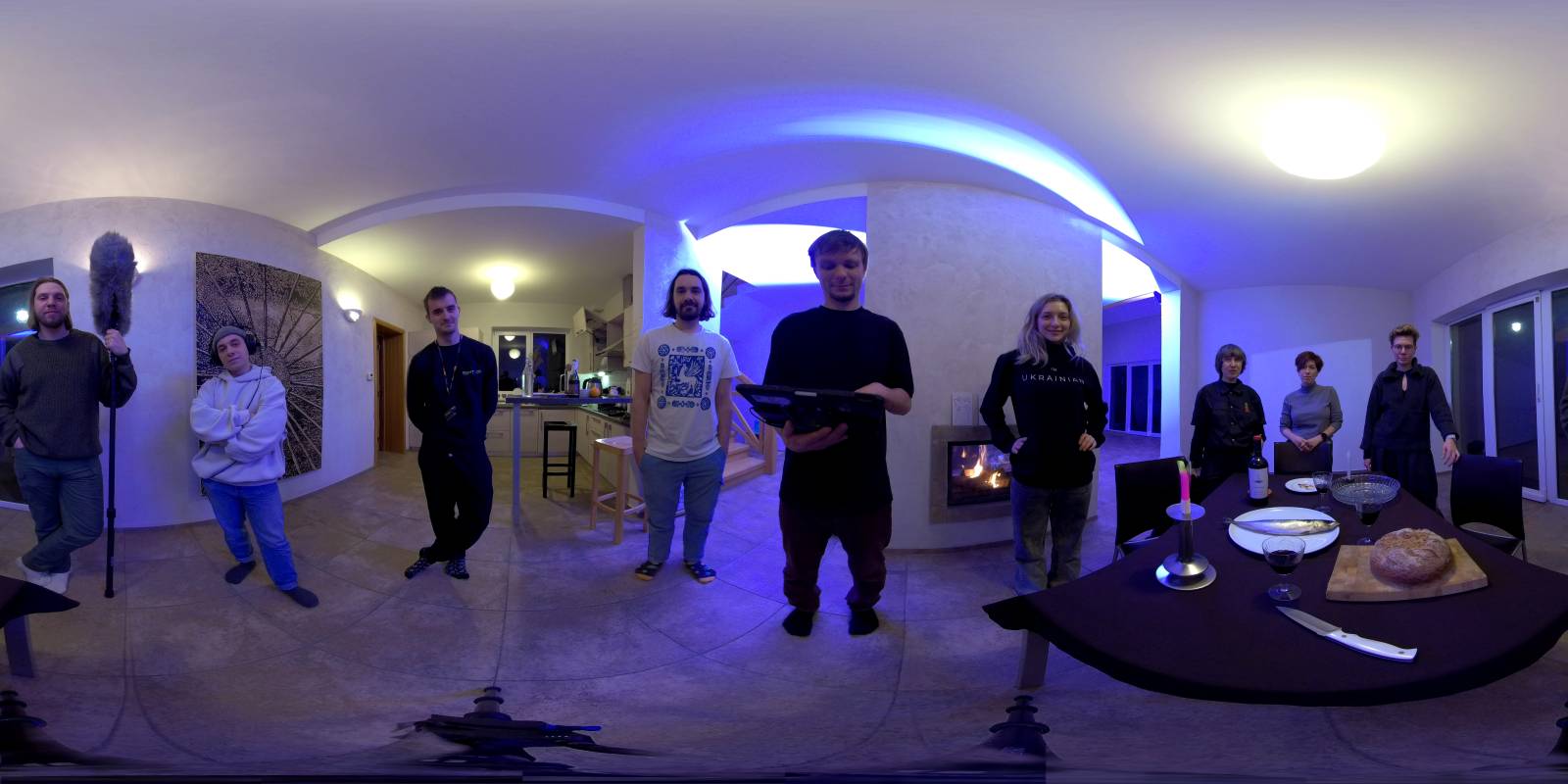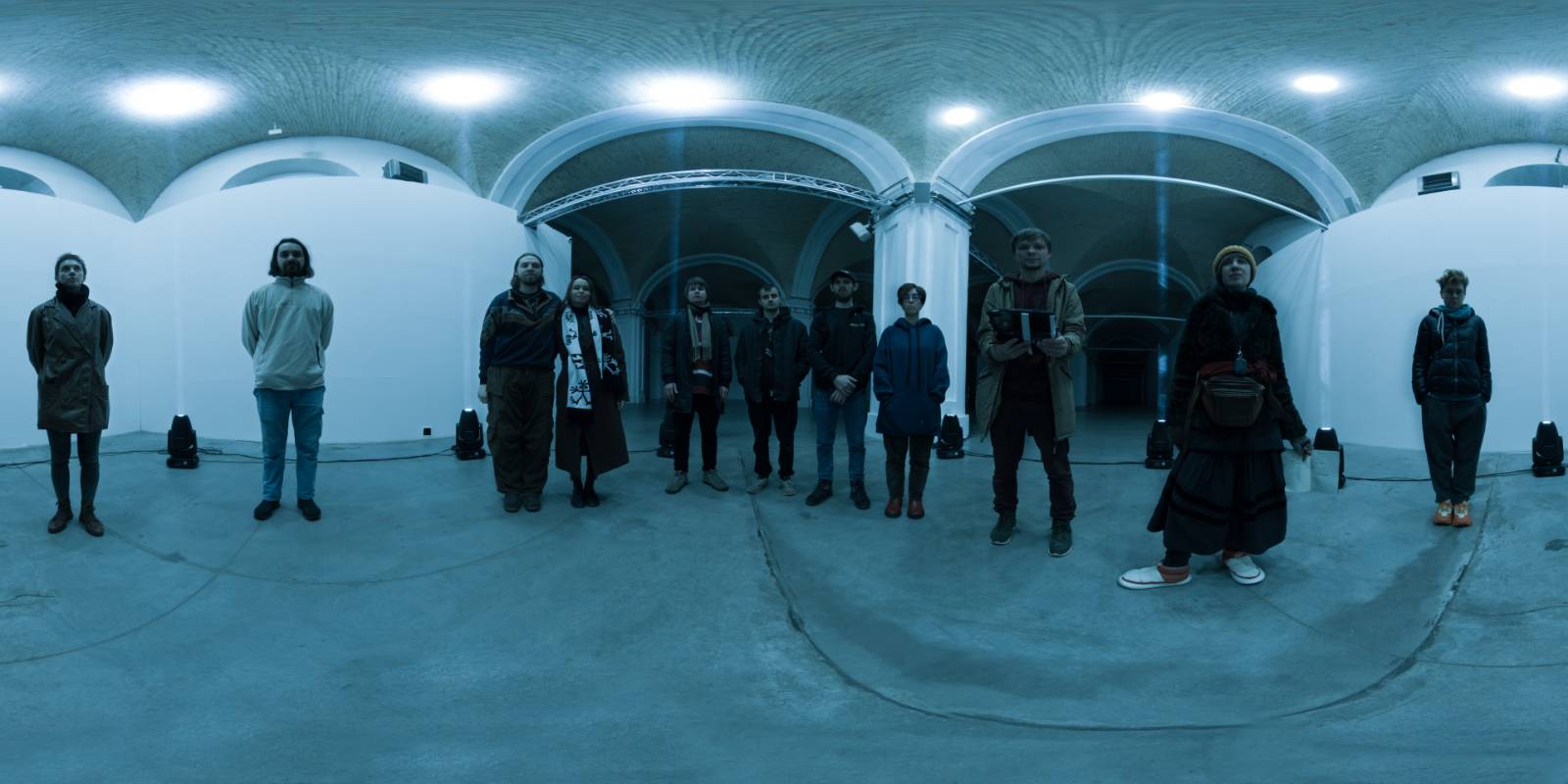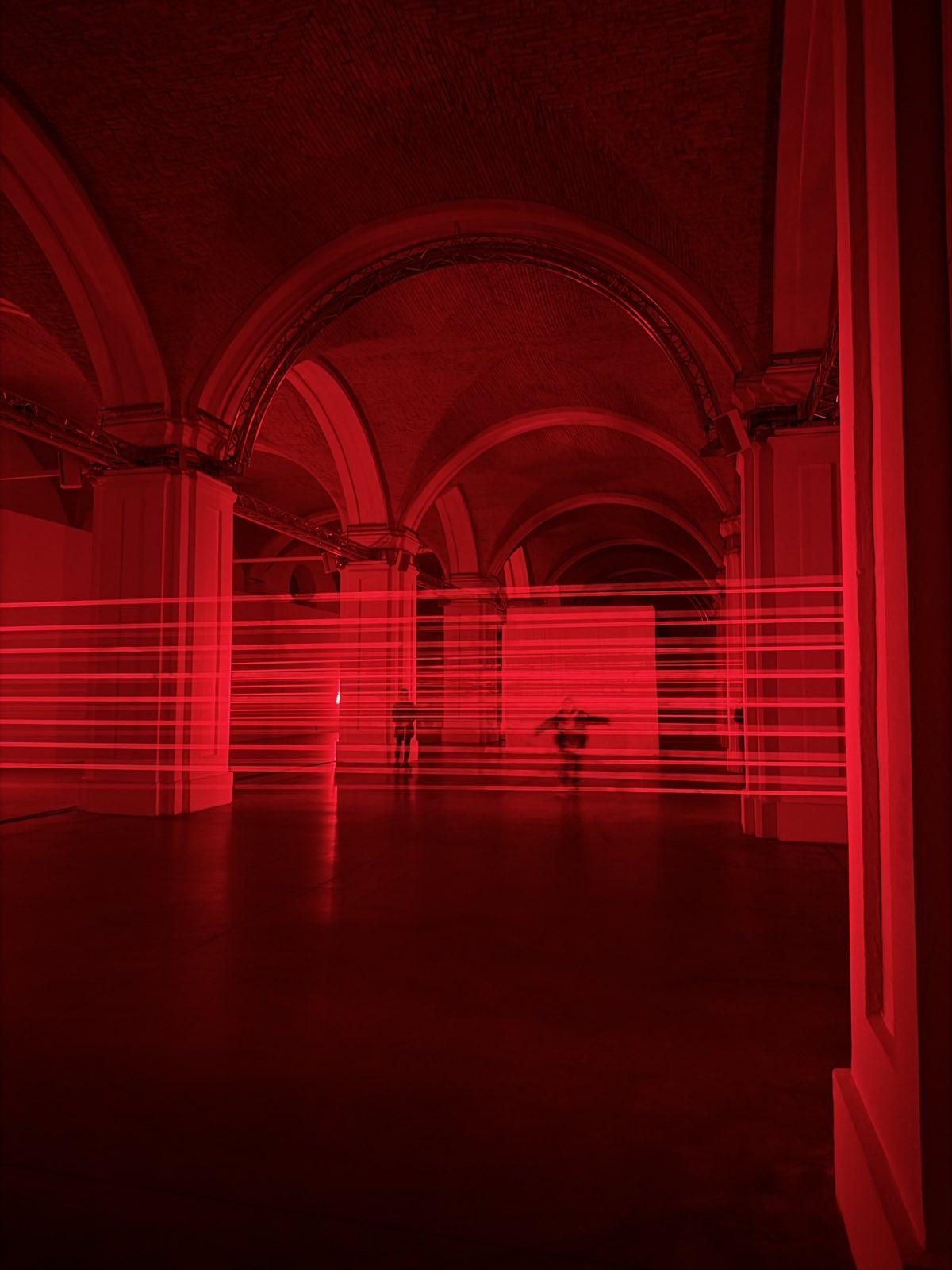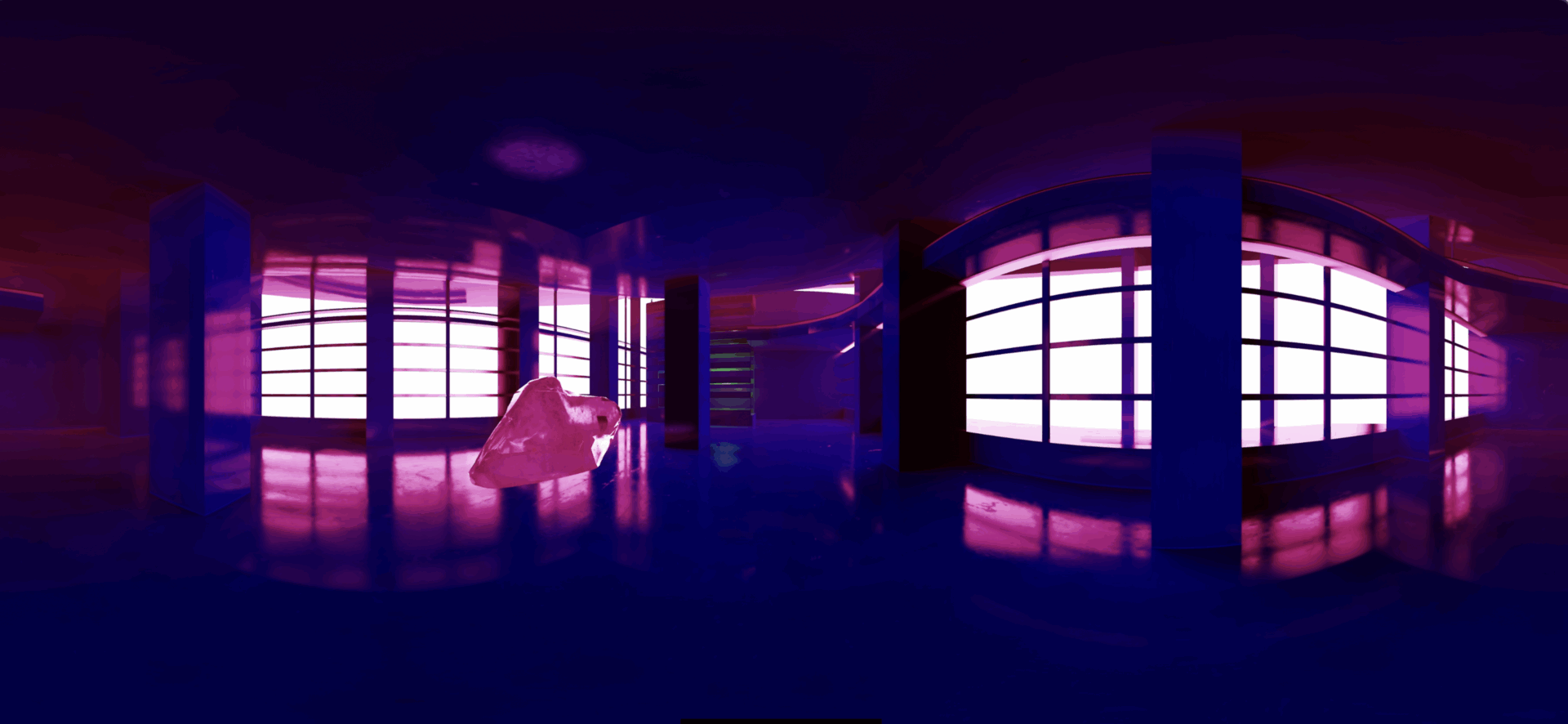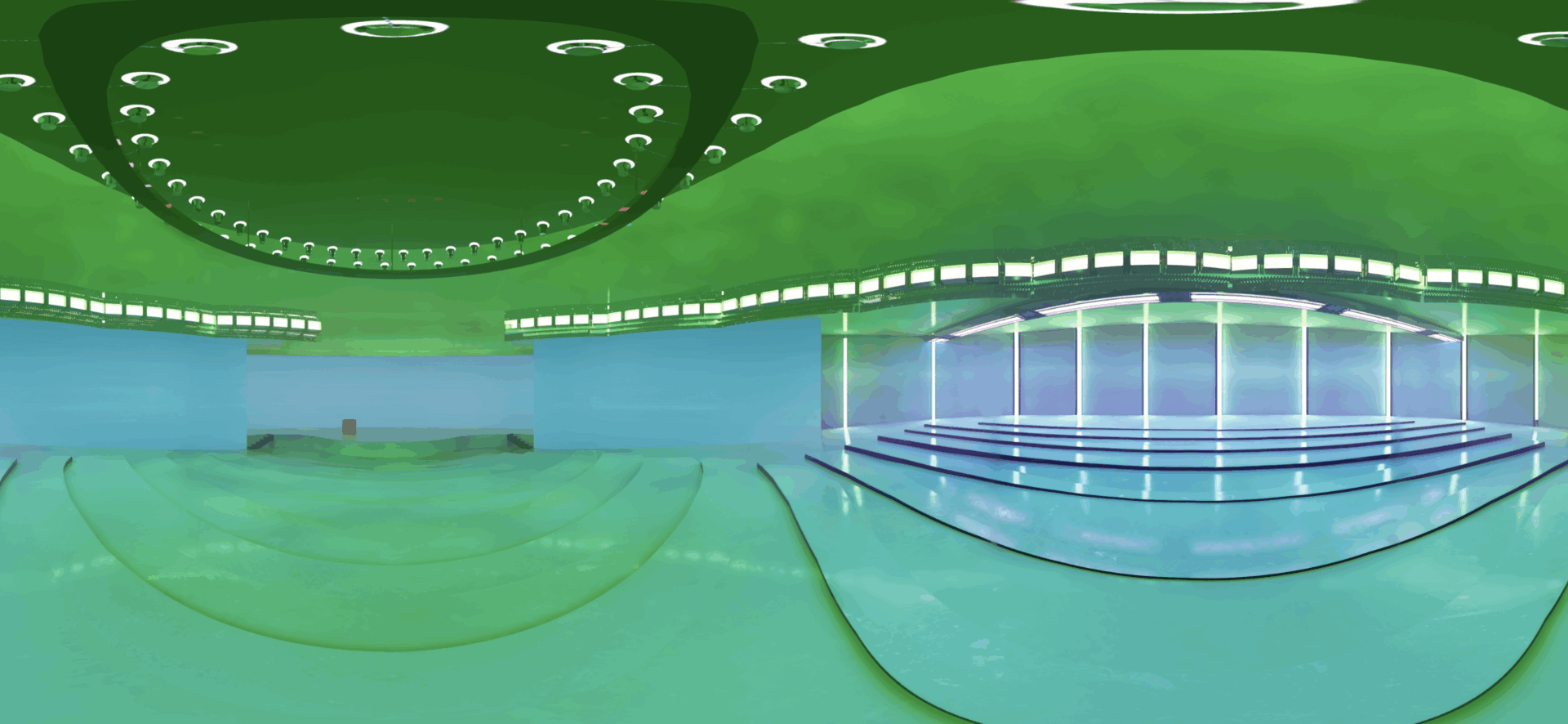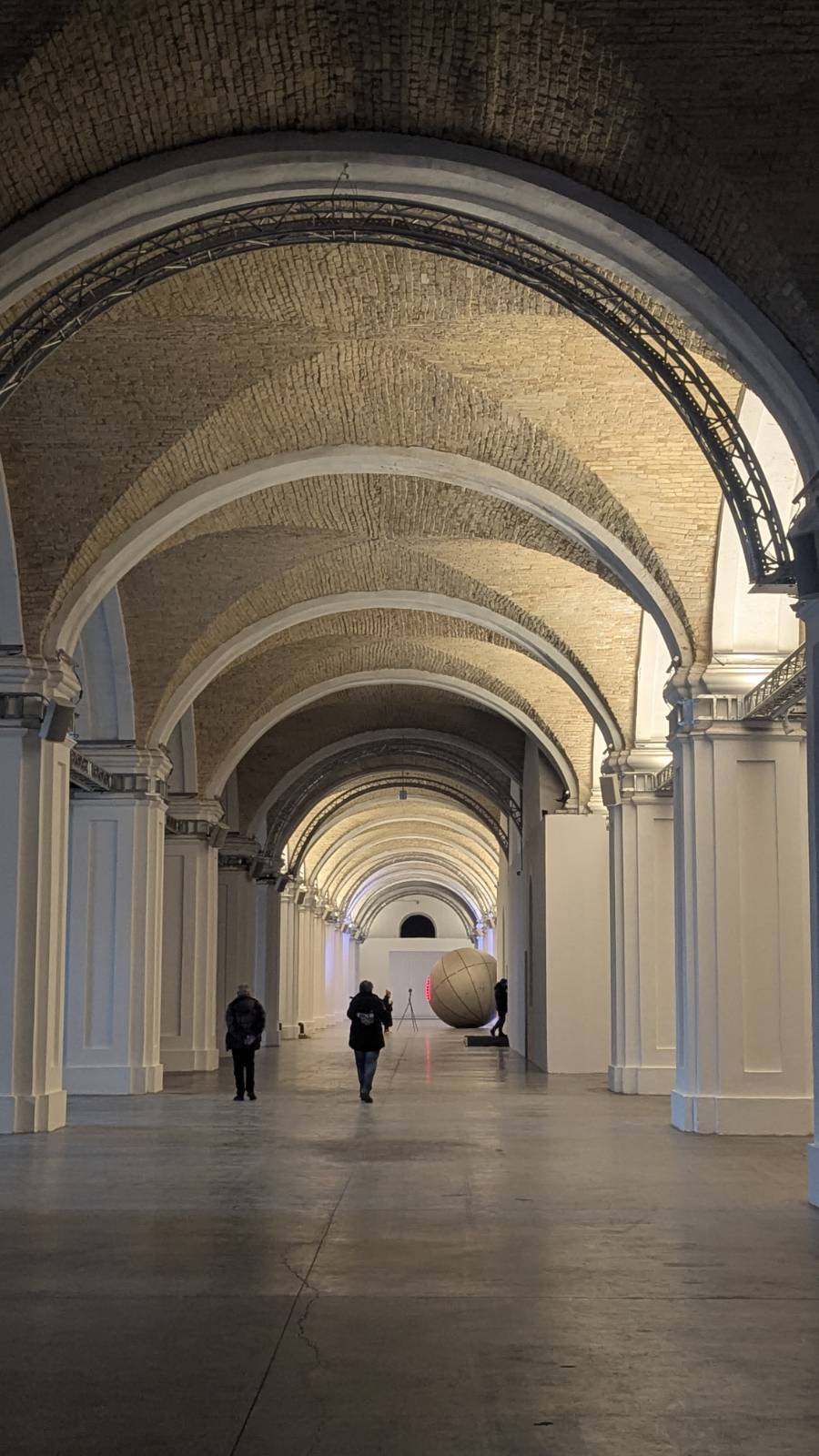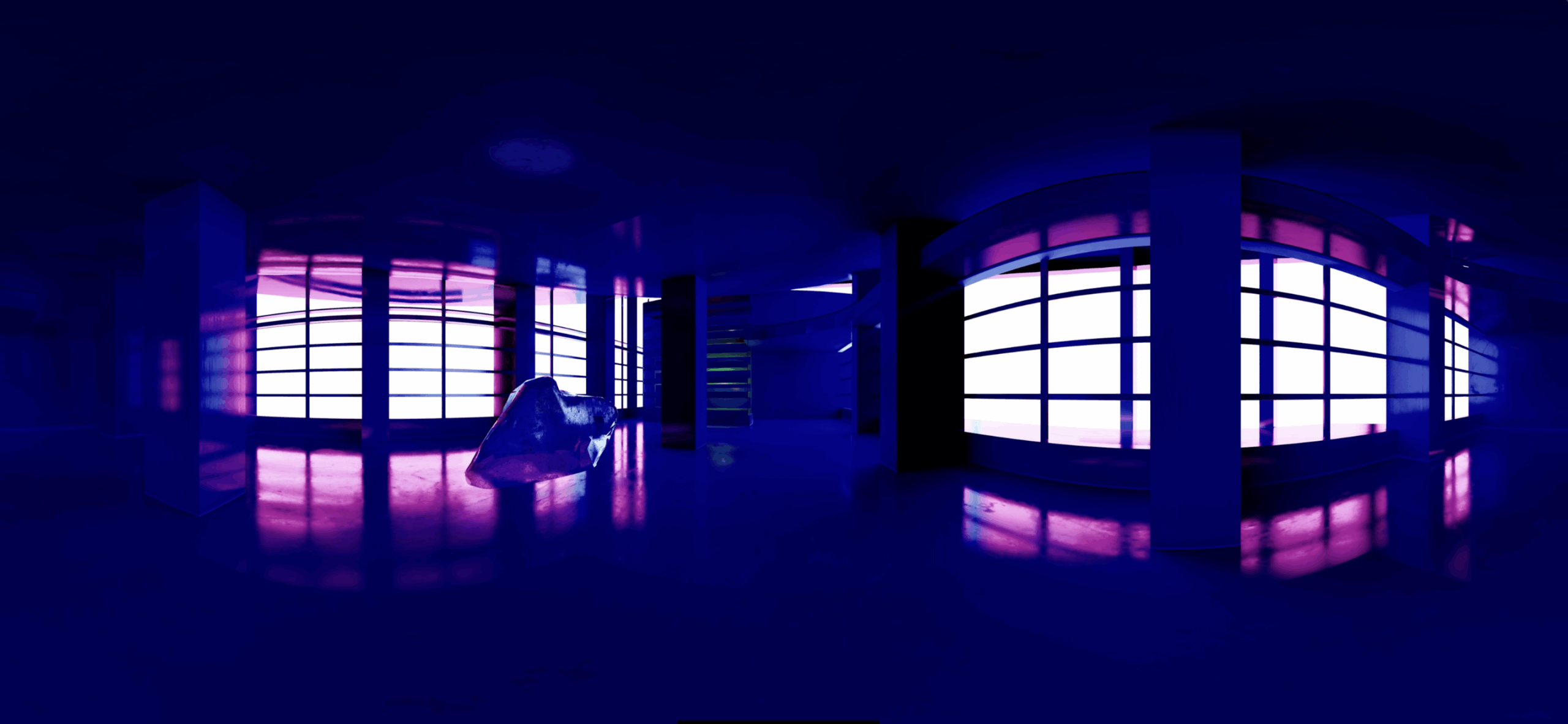+ WHAT?
Exploring color associations with war sounds
to shape an opera’s narrative.
+ HOW?
Studying the emotional responses
of war-affected individuals.
Which color is associated with the sound of an explosion, a drone, air defense, or an air raid siren? What emotional perceptions do sounds from the Russia-Ukraine war evoke through color associations? To explore these questions, 60 personal interviews and surveys were conducted with Ukrainian servicemen (both active and seriously injured), children under 14 who left the country due to the war, civilians who experienced shelling and occupation, and artists. The responses served as the foundational material for the opera Coloropera, which exists both as a sound-light-color installation and in virtual reality (VR), accompanied by stylized visual imagery.
Collaborations
– Superhumans, (https://superhumans.com/en/) – A nationwide modern center for war trauma, specializing in prosthetics, reconstructive surgery, rehabilitation, and psychological support for adults and children affected by the war since 2022. This collaboration enabled the project team to work with war veterans who participated in the interviews and provided guidance on how to communicate with veterans without causing retraumatization.
– Ukrainian media, (texty.org.ua) – Collaborated to visualize the survey results, highlighting the social and artistic aspects of the project for their readers.
– Project Team – The project brought together composers, lighting designers, artists, and scientists to conduct the research and create the opera, involving up to 30 people in total.
Soundscape of Ukraine 2022-2025, VR-opera, Coloropera, SYNESTHESIA, Florian Yuriev, FLYING SAUCER building
Curated Datasets
To study the emotions and perceptions of people affected by war during the summer and autumn of 2024, a survey was conducted primarily through interviews exploring the perception of sound following the full-scale Russian invasion of Ukraine. The survey included four participant categories: military personnel (active and wounded), civilians who experienced traumatic events, artists, and children living abroad due to the war. In total, 60 Ukrainians and one volunteer soldier from Poland were interviewed. With an artist conducting the interviews, respondents felt encouraged to share personal experiences and irrational emotional responses to war.
Topics included:
– Sounds of war and colors associated with specific war sounds
– Sounds and colors of victory, imagined futures, silence, comfort, and happiness
Objective: To gain a deeper understanding of individual associations between sounds and colors.
During conversations, the notion of “mimicry sounds” emerged—sounds resembling those of war that provoke fear or discomfort even far from the front lines. Analysis, including spectrograms, highlighted the similarities between real war sounds and these “false” sounds. The gathered research and survey responses informed the theatrical piece Coloropera, an audiovisual artwork consisting of four acts, each defined by music, libretto, and the physical spaces depicted:
– Future: Kyiv’s FLYING SAUCER (Tarilka) building, originally designed as a concert hall for “tones of color” and “symphonies of light”
– Civilians: A house near Bucha, reflecting the tragic mass murder of civilians by Russian forces
– Fight and Return: Mystetskyi Arsenal, a contemporary cultural institution rebuilt from a former war weapons factory
These filmed physical spaces provide narrative context and convey a journey through time.
The survey’s “warm data” is available upon request at info@alevtinakakhidze.com
A brief report of the survey, including the artist’s conclusions and observations, is available :
Immersive Experiments
A virtual reality (VR) opera titled Coloropera was created utilizing recordings of the sounds of war combined with stylized visual imagery. For this, a 360° camera was used at physical spaces with the addition of 3D modeling and animation. All material underwent postproduction and mastering at the end of the process.
At the Brain Lab of the Maastricht Brain Imaging Center, physiological responses of viewers were studied using ECG recordings to examine how the human body reacts to the opera. The sample included a civilian who had experienced war, a civilian who had never experienced war, and two active-duty servicemen from the Armed Forces of Ukraine and the Armed Forces of the Netherlands. Participants experienced a 21-minute VR opera using Meta Quest 2 VR headsets, while ECG data was recorded via five electrodes placed on the torso.
Research Question: How does the level of familiarity with the sounds of war affect physiological responses to these sounds?
Art Question: Is there a universal perception of art, one that is largely independent of the viewer’s life experience? Can a work of art be perceived universally, regardless of individual background?
Lessons learned:
All members of the project are Ukrainians with direct experiences of war, including military service. This background motivated an experiment to investigate how people with varying familiarity with the sounds of war would respond to the artwork Coloropera. Timing proved to be crucial for successfully realizing the project. The ReSilence residency provided the team with the necessary time during the war—something that would not have been possible under conditions such as blackouts.
Research based on surveys and interviews about the sounds of the Russia-Ukraine war (2022–2025) and their emotional impact through color associations in both urban and natural environments offers valuable insights for fields such as psychology, neuroscience, urban planning, and interior design. One key group involved in the research was Ukrainian children now living in the EU. While integrating into European communities, they carry war experiences from Ukraine that must be carefully considered.
Observations from the research include:
– Color associations are only possible with sounds that have been experienced; unfamiliar sounds do not elicit color associations.
– Explosions were associated with almost all colors, except blue and pink.
– Blowouts were most often associated with black and red.
– Sounds of various types tended to evoke gray (neutral) associations; for many respondents, explosions were described as gray, symbolizing a lack of life.
– Out of 60 respondents, only one expressed a liking for the sounds of explosions.
– Color associations for explosions and whistles (war sounds) differ from associations for civilian life sounds.
– Ukrainian children abroad perceive the sounds of surrounding languages differently.
– Prayer was also identified as a sound of war.
– Most civilian respondents, including artists, could recognize air defense systems by sound and associate them with colors distinct from incoming strikes and explosions.
Based on this research, the theatrical piece Coloropera was created, existing both as a sound-light-color installation and in VR. The piece explores war in the 21st century through immersive technologies, focusing on human emotions and feelings without the physical presence of humans—using only sound, light, and color in physical spaces. It embodies the collective voice of 60 Ukrainians, reflecting cultural storytelling and shared experiences. The project also served as an art therapy process for the team, helping them transform fear into creative expression and reducing the negative emotional impact of the war. In addition, the installation features an alternative version of interior design for Kyiv’s FLYING SAUCER building, connected to upcoming technologies.
Adaptability / interoperability:
The research constitutes an extensive exploration of sound and color associations gathered from sixty individuals who experienced war. It can be freely used by others to create new operas or artworks based on the collected data. The findings on the connection between the sound of war and color associations may also be applied in multiple fields, including art, psychology, social sciences, design, music, and neuroscience. Additionally, the project can serve as an educational tool, fostering awareness about the impact of war on individuals and society. Measurements of heart rate were also conducted with four participants while they watched and listened to the opera at the Brain Lab, Maastricht University, in collaboration with neuroscientists. The aim was to understand how the work affects the human body, particularly in relation to sounds that may evoke distressing emotions.
Throughout history, the theme of war has been depicted through numerous artistic and media forms. However, the advent of new technologies enables contemporary reinterpretations of this subject through innovative storytelling, immersive experiences, and interactive platforms. This convergence of technology and creativity opens new possibilities for adaptability, allowing the reimagining and recontextualization of how war is discussed and understood—revealing its complexities in unprecedented ways.
Impact
During the Russian-Ukrainian war, in collaboration with individuals who had direct experience of the conflict, the artist realized the idea of the architect and artist Florian Yuriev, who lived in Kyiv and passed away just one year before the full-scale Russian invasion of Ukraine in 2022. Yuriev envisioned a performance in which musical compositions, tonalities, and sounds would be presented together and accompanied by corresponding color associations. However, this concept was never implemented during his lifetime, as he was not particularly inclined toward technology or was preoccupied with other pursuits. The project invited inhabitants of various Ukrainian cities to develop Yuriev’s idea in the form of an opera—an artistic work that combines sound, light, and color in physical space—entitled Coloropera. Based on the color associations of sixty participants, a methodology was created to structure these collective results. By combining one sound with one individual’s data, the output was likened to an “aria”; when pairing two sounds with data from two people, it resembled a “duet”; and when integrating multiple sounds and data, it became a rich “chorus.” This process was developed using the program SOVIS.
Two formats were produced: a VR version and an audio-light installation, both incorporating a narrative realized through a libretto, where each audio piece and light color correspond in specific relations. This project also demonstrated how art can serve as a tool for therapy and healing for individuals who have experienced the trauma of war. Furthermore, it highlighted the importance of dialogues about sounds, colors, and their associations with emotions and experiences during wartime.
